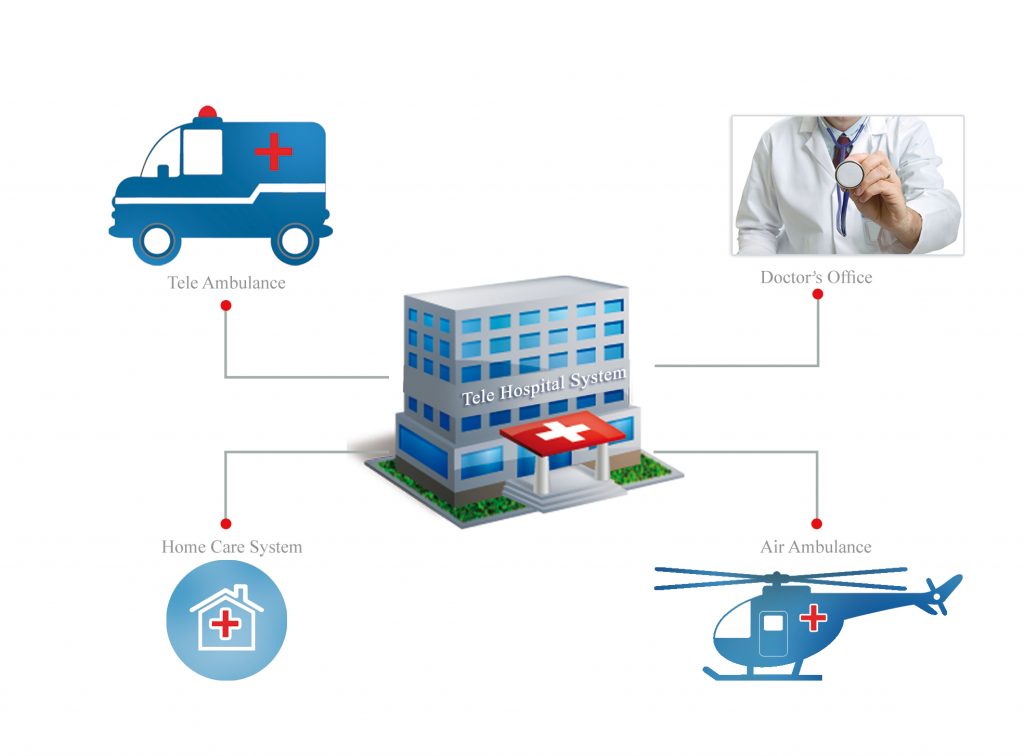This Tele Hospital System needs to handle the required traffic with varying bandwidth. Initially, the patient numerical data such as vital data, GPS is sent to the emergency center. This only requires a 50 B/S bandwidth, reducing the load on the server. Only when it is determined that more information is needed, more data are sent. This data may include a picture of the problem area of the patient’s body and the graphical presentation of his critical signals. Handling the communication between the two sites by using this technique eliminate the requirement for a complex network hardware. The task of managing the data in the emergency center is divided between several sub-servers to make it practical for the appropriate personals to find the best solution for the problem at hand. All these are managed by the application software at both sites. When the decision is made by the staff at the emergency center, the ambulance is directed to the proper hospital for the patient to have the best possible care. It is important to note that in this design the emergency center is always in contact with the patient until the destination. All these information are organized, tabulated and, stored for future references. At any time, the software allows both numerical and graphical access to the data.
This Tele Hospital System has the ability to:
- Manage 1200 clients simultaneously
- Work with a low bandwidth requirement like 2MGb/s
- Work without any especial hardware requirement
- Record the patient information up to 100 GB
- Be Installed in an ordinary PC and laptop
- Be compatible with Android, iOS and Windows
- Gather the data and use statistical facilities
- Control the options remotely by the doctors
- Have a user-friendly software on the server
- Be in a high level security against vulnerability
- Have no side effect on the other devices
- Search data by name, date, gender, age, disease type, etc.
- Be connected to the external antenna for GPRS and 3G
- Be connected to the external modules and medical devices by USB, RS 485, RS 232, WIFI, Bluetooth, and Ethernet
- Take a short processing time due to using ARM microprocessor and Intel
- Be multilingual
- Be connected to MySQL and SQL Servers
- Use the facility of mirror storage for important data
- Transfer data to the other servers

